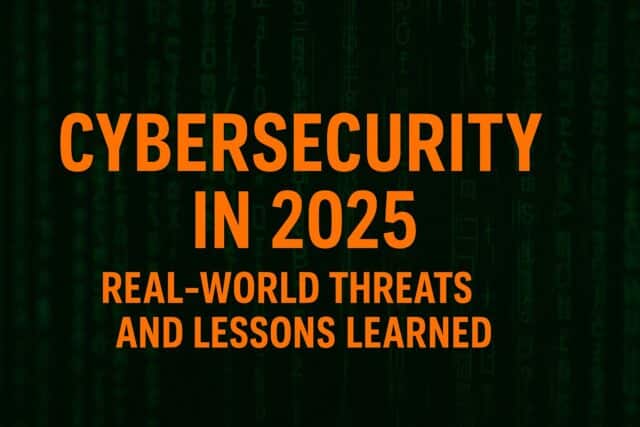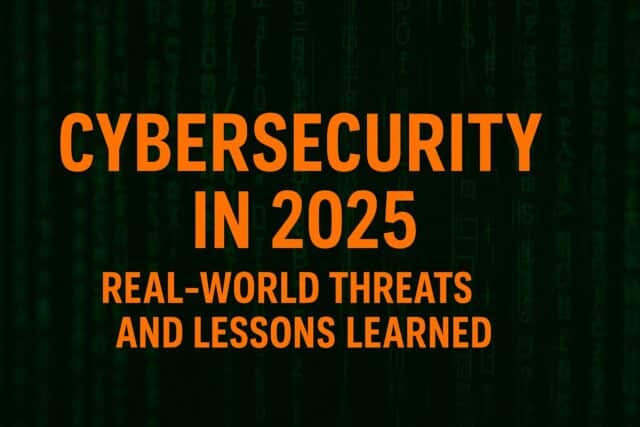As cyber threats evolve, understanding their real-world impact is crucial. This article explores four significant cybersecurity threats shaping 2025—each illustrated by an actual incident that caused material losses—and the key lessons organisations can take from them.

1. AI-Powered Attacks: The Rise of Deepfake Scams
Artificial Intelligence has enabled cybercriminals to craft compelling deepfake videos and voice clones, leading to substantial financial losses.
Case Study: In early 2024, British engineering firm Arup fell victim to a sophisticated deepfake scam. An employee was deceived into transferring HK$200 million (approximately £20 million) after participating in a video call where fraudsters used AI-generated visuals and voices to impersonate senior executives. This incident underscores the growing threat of AI-driven social engineering attacks. Source
Lesson: Implement strict verification protocols for financial transactions and raise employee awareness about deepfake technologies.
2. Ransomware-as-a-Service (RaaS): Lowering the Barrier for Cybercriminals
The RaaS model has made it easier for less-skilled attackers to launch sophisticated ransomware campaigns, leading to widespread disruption and financial loss.
Case Study: In April 2025, DaVita Inc., a major U.S. dialysis provider, was hit by a ransomware attack that encrypted parts of its network. The attack disrupted services across nearly 3,000 clinics. While critical patient care continued, the incident highlighted serious vulnerabilities in the healthcare infrastructure. Source
Lesson: Organisations must implement regular system backups, employee phishing training, and detailed incident response plans to reduce ransomware impact.
3. Supply Chain Attacks: The Ripple Effect
Attacks on upstream software and service providers can disrupt operations across entire ecosystems.
Case Study: In early 2023, a ransomware attack targeting a key supplier of Applied Materials—a leading semiconductor equipment manufacturer—caused $250 million in revenue losses in a single quarter. The breach disrupted critical shipments and impacted the broader tech supply chain. Source
Lesson: Enforce third-party security assessments and build redundancy into supply chains to mitigate cascading failures from indirect attacks.
4. Quantum Computing: A Looming Threat to Encryption
While practical quantum attacks may still be a few years away, their threat to existing cryptographic standards is very real, and planning is critical.
Insight: Quantum computers could eventually break RSA, ECC, and other commonly used encryption algorithms. Leading companies and governments are now actively researching and transitioning toward post-quantum cryptography. Source
Lesson: Begin preparing by inventorying encrypted assets, evaluating quantum-safe alternatives, and tracking standards from organisations like NIST.
Final Thoughts
Cybersecurity in 2025 is no longer about theory—it’s about learning from real failures. Whether multimillion-dollar deepfake fraud or supply chain ransomware stalls global production, the threat landscape is active and evolving. Organisations that internalise these lessons and act early will be best positioned to protect their data, users, and bottom line.
